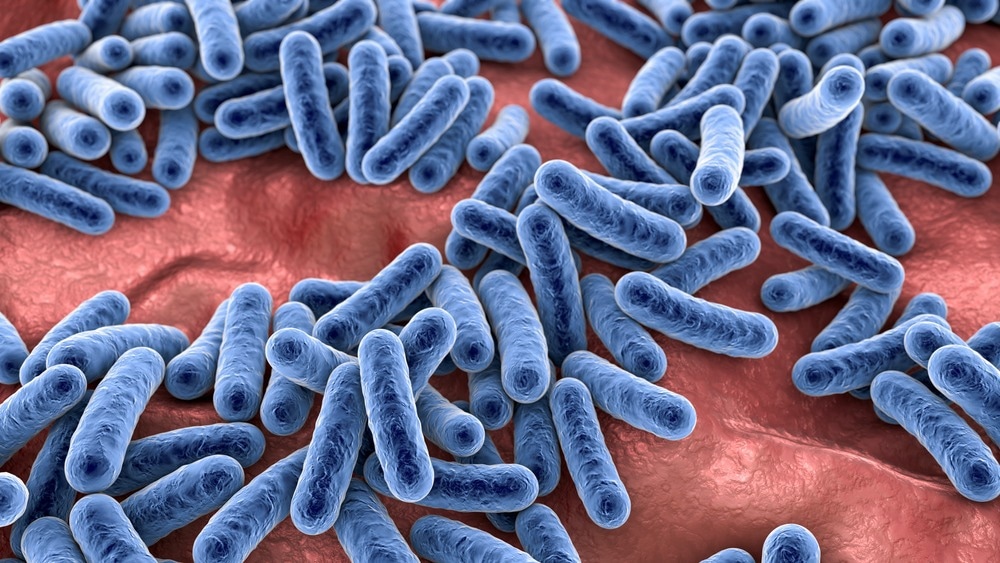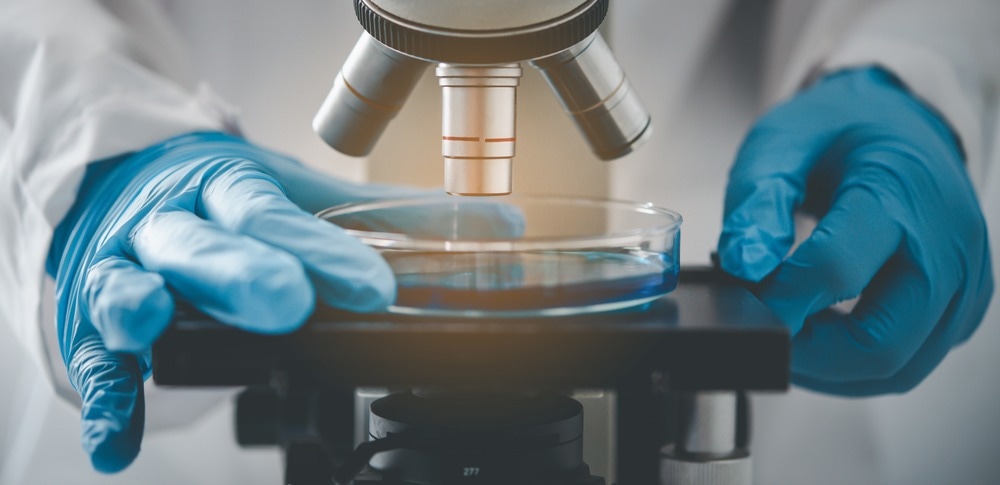The human microbiome is an extremely diverse and dynamic system that various factors, including age, sex, lifestyle, geographical location, occupation, and interactions with others, can alter. In forensics, researchers have applied various molecular biology tools to analyze microbiome data as potential evidence in criminal investigations.

Image Credit: Kateryna Kon/Shutterstock.com
The Individuality of the Microbiome
Some of the most common sites of forensic sampling include the skin, vagina, saliva, and stool, each of which is associated with its own microbial composition that is unique to each individual.
As the largest organ in the human body, the skin microbiome consists of a significantly greater amount and diversity of bacterial, viral, and fungal species than other locations. Age, gender, and various environmental factors, including moisture, temperature, and geographical location, can alter the diversity of the skin microbiome, thereby allowing for its structure and composition to be unique for every individual.
Previous research has found that most individuals carry between eight and 24 families of bacteria on the skin of their hands. Some of the major taxa found in this area include Staphylococcaceae, Corynebacteriaceae, Propionibacteriaceae, and Streptococcaceae; however, intra- and interindividual differences in the bacterial community composition on the skin of the hands were observed. Notably, Cutibacterium acnes, which acts as a commensal bacteria on the skin, appears to be particularly useful for forensic investigations on skin microbiomes, as its abundance can range from 35% to 89%.
Using the human microbiome to decipher crime scene traces
The composition of the skin microbiome also appears to differ significantly between ethnic groups. Latin Americans, for example, have been shown to exhibit a relative abundance of Prooteobacteria and Acinetobacter in the skin of their forearms as compared to Caucasian-American, African-American, African, East Asian, and South Asian. Likewise, previous studies have also reported differences in the skin microbial communities obtained from individuals residing in the same country.
Microbial Analysis of Crime Scenes
The skin microbiome has been shown to be stable over time. As a result, many objects that come in contact with the skin will subsequently exhibit a unique microbial signature. Thus, in addition to identifying different body sites, microbiome analysis can also be used to establish the geographic location of a criminal event, such as dorm rooms, classrooms, offices, and bathrooms.

Image Credit: photobyphotoboy/Shutterstock.com
In one study, researchers investigated the potential of an individual's microbiome to be transferred onto cotton and glass surfaces. Herein, two transfer modes were assessed, the first of which involved a pair of people shaking hands and then subsequently rubbing a surface with their right hands. The second transfer mode involved an individual directly rubbing the surface with their left hand, shaking hands with a partner, and again rubbing the exchanged surface with their left hand. Regardless of the type of substrate that was involved and mode, the transfer of human skin microbiome was observed between all participants.
In another study, 88 samples of objects obtained from 16 different crime scenes were analyzed for their ability to retain postmortem skin microbiomes. Certain objects, including medical devices, bottles, bongs, manipulated objects, books, drinking containers, glasses, identification cards, automobile armrests, and steering wheels, were associated with 100% precision.
Comparatively, other objects, including computing devices, remote controls, telephones, door handles, and light switches, had a precision rate equal to or less than 67%. Samples obtained from water taps, purses, razors, and lighters had a precision rate of less than 60%.
Sexual Assault Investigations
In theory, sexual contact leads to the exchange of each individual's microbiome that can be used for identification purposes, particularly when no other type of evidence is available.
In one study, researchers demonstrated the stability of the pubic microbiome for six months, thus indicating the utility of microbiome analysis for this type of crime. Herein, microbiome samples were obtained from the pubic area and hair of 43 individuals at different time points.
Over 77% of the samples obtained in these samples were represented by Corynebacterium, Staphylococcus, Propionibacterium, and Lactobacillus. Regardless of the frequency of sexual activity, microbiome samples obtained from mad exhibited a greater abundance of Corynebacterium as compared to those obtained from women.
In another study, researchers were interested in determining whether certain characteristics of a victim's vaginal microbiome could be used to identify an aggressor. To this end, the authors confirmed that this form of microbiome analysis could accurately predict the expected proportion of the aggressor when a small group of potential assailants is being considered.
Future Outlook
Despite the vast amount of publicly available information on the microbiome and its impact on certain health conditions, further research is needed to integrate microbiome data for forensic applications effectively.
More specifically, standardized protocols on collecting, storing, and analyzing samples for different forensic investigations are urgently needed. The optimization of these analytical processes will allow researchers to incorporate microbiome data into a number of forensic fields ranging from criminal identification to cause of death, as well as limit the risk of contamination.
Establishing robust and reliable microbiome databases that allow researchers to compare microbiome compositions according to geographic origin, ethnicity, diet, and other demographic factors is also critical for forensic science applications.
Sources:
- Garcia, M. G., Perez-Carceles, M., Osuna, E., & Legaz, I. (2020). Impact of the Human Microbiome in Forensic Sciences: a Systematic Review. Applied and Environmental Microbiology. doi:10.1128/10.1128.AEM.01451-20.
- Cho, H., & Eom, Y. (2021). Forensic Analysis of Human Microbiome in Skin and Body Fluids Based on Geographic Location. Frontiers in Cellular and Infection Microbiology, 11. https://www.ncbi.nlm.nih.gov/pmc/articles/PMC8388931/
- Ghemrawi, M., Torres, A. R., Duncan, G., et al. (2021). The genital microbiome and its potential for detecting sexual assault. Forensic Science International Genetics 51, p. 102432. www.sciencedirect.com/science/article/abs/pii/S1872497320302040